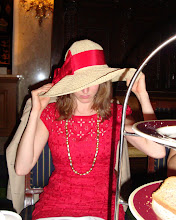The structure of Methods itself was radically different than the two classes I had taken previously. Rather than build day by day on the techniques that we had learned, each class was treated as one unique session, in which we had 3-4 opportunities to practice that method. The logic is this: if you can learn how to properly perform any of these methods, when approaching a new recipe, you will simply read it through and say, "oh, this is just a braising recipe with ingredients that I've never seen before. I know this method, just not these ingredients." I guess we're building kitchen confidence one step by step method at a time. So, my chef would say, you want to know how to saute? Here: take broccoli, fish and veal and see what sauteing does differently to each of these things. Then wash your pans, get new recipes and do the same thing for frying, grilling, poaching, you get the idea. So here's what I learned and what we cooked.
Saute: using high fast heat to cook quickly over a flame
Trout a la meuniere, veal scallopini, and stir-fried broccoli
Braise: sear meat and then cook in liquid, on the stove top or in the oven, using slow heat. As you slowly cook the meat, the cartilage melts thereby thickening the sauce and softening the meat.
London Broil, lamb stews, beef stroganoff
Below: Brad, gingerly pouring Guinness into our lamb stew, wishing he could have just one sip.
Fry: To cook in heated fat, either battered or simply placed into oil to crisp and brown.
fish and chips, shrimp and vegetable tempura, apple fritters.
Grill: to place food directly over a flame, no pan used to cook and then blacken.
vegetable skewers, pork chops with a grilled pineapple, red pepper salsa
Not pictured, but still practiced: Roast, and all kinds of "wet cooking" ie Boil, Poach, Blanche I suppose these just weren't photogenic enough for me to snap, or those 11pm nights in the kitchen had worn me out to the point of forgetting to take pictures.
It was finally in Methods that the actual work of cooking hit me, like a stock pot right on your non-slip shoe covered toes. Culinary school is exhausting. Forgetting to take pictures in class was the least of my worries. We had lost about 5 of our original 25 people that all started the program together. Those of us hangers-on realized that we no longer had time to work out, see friends, cook for ourselves at home (ironically) or get good sleep. Personally, on nights after class I was getting 4-5 hours of sleep and then trying to work 10 hour days. I am officially tired. To any of you reading this who I used to be friends with before March 2010, this is your formal apology for dropping off the map. I realized that with school, I had room in my life for 2-3 relationships outside of work, family and school and beyond that I had nothing left. The good news is, I can make a dang good apple fritter. These are the sacrifices we make to follow our dreams.










No comments:
Post a Comment